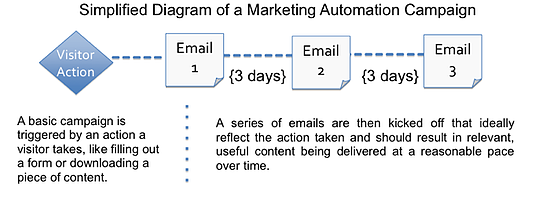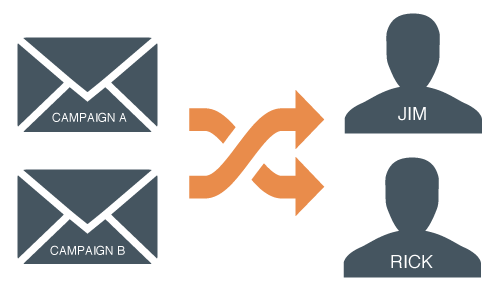 Online persuasion is no easy task. It requires much time and effort from the B2B marketer. Not only are you dealing with a number of buyers, but you're dealing with a long time frame.
Online persuasion is no easy task. It requires much time and effort from the B2B marketer. Not only are you dealing with a number of buyers, but you're dealing with a long time frame.
How do you persuade them to move further down the funnel until they're ready to buy?
And, more importantly, how do you persuade them that you're the best guys out there for the job?
Content is the answer. But to distribute this content efficiently you need marketing automation. And marketing automation needs to coordinate according to a set plan.
First, let's have a look at the 3 foundations of persuasion mentioned in Mediative's The Buyersphere Ebook:
1. Reciprocity
Sociologist Alvin Gouldner found that there is no human culture that does not follow the rule of reciprocity. It can be as simple as returning a favour. Once someone does us a favour, we feel the need to return it if not now then in the future.
The equivalent of a favour in the B2B world is giving your prospects something which educates them about their problems. To gain their trust, talk about their problems that you're good at solving, without even mentioning your solution.
2. Social Proof
Being human makes us pack animals. So when it comes to making decisions, we are natural herd followers. That's why market leaders have a significant advantage. We instinctively assume that if large groups of people are doing something, they must be right. We think it must be worthwhile, otherwise so many people would not be doing it.
Social proof at the top of the funnel can be subtle, like a quote testimonial, the social sharing buttons at the top of each blog post, or a call to action saying how many clients or subscribers you have.
For the middle of the funnel, you will need a juicy piece of content for prospects to consume as they near the decision-making stage, like a case study of one of your past clients.
But you must send them a case study that makes them identify themselves as being part of the same herd as that client in your case study.
3. Commitment and Consistency
Once we start down a path, it's hard for us to abandon it. In fact, it takes a powerful reason to abandon a direction we're heading in to start a new one.
That's why you should be trying to get a show of commitment out of your prospect, so that you're more likely to be the final choice. Towards the bottom of the funnel, ask for an obligation-free meeting where you can get a feel for your prospects on a personal level, and understand their business more. You can offer free advice, and organise a follow-up meeting off the back of that.
People are likely to honour something to which they publicly commit. The sooner you can get your prospect to commit, the better!
Use marketing automation to match your content to your buyer personas!
So, where does marketing automation come into play? Well, marketing automation exists so you can better personalise your marketing to suit your prospect's needs.
It means you can determine readiness to buy through lead scoring, and then design campaigns that work off both behavioural and demographic factors of each prospect. Lack of automation can deter prospects because they'll feel that it's not relevant to them; you will have missed the mark.
If you have a number of buyer personas who have varying pain points, separate them into different funnels to avoid confusion. You need to divide them into separate lists depending on what they've told you about themselves, and then trigger a nurture campaign based off of these lists.
With automation, collecting information is easy. Your forms don't have to be 20 fields long. In fact, you can get 20 bites of information over 4 or 5 emails. It's the same form, but since the system remembers who your prospect is, it will automatically hide the fields they've already answered. This solves the challenge of keeping your forms short, and gives your salespeople a clearer idea of who they're talking to.
Make sure that you collect bites of information (what industry they're in, what their company size is, what problem they find most challenging) that help you match the most relevant case study to its recipient. If you send a prospect a case study that they can't identify with, then you will fail to persuade them that your business can help a business like theirs.
To learn more about this subject, please have a look at our infographic on marketing automation must-haves for B2B marketers or have a look at our other blog posts on marketing automation.



